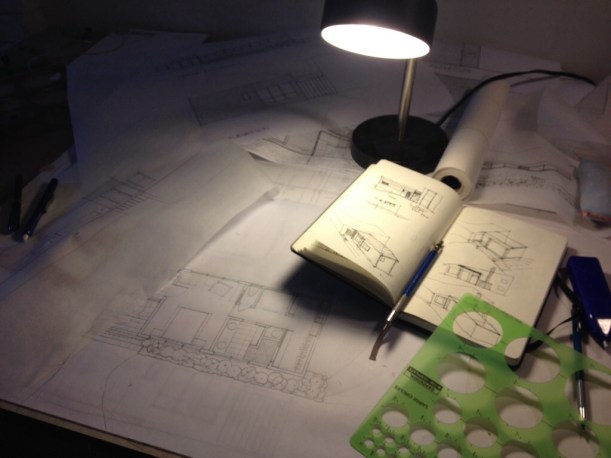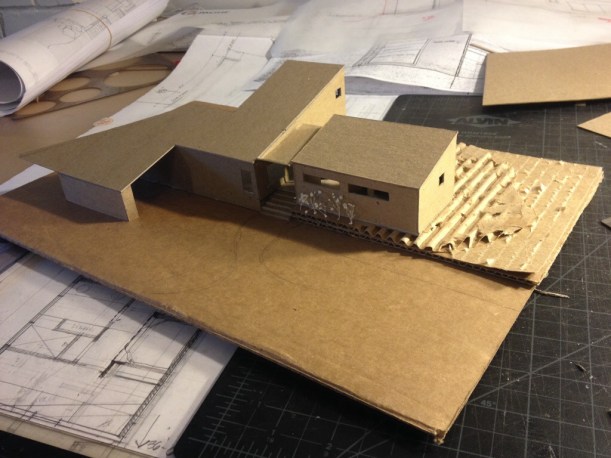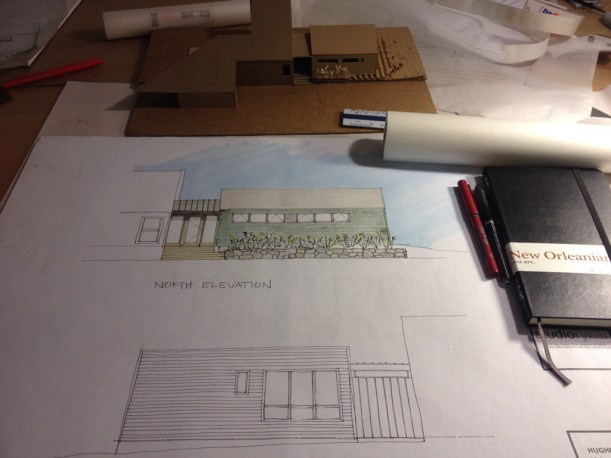
I’ve lived in Montana since 1998. When I arrived there was still a realness, a grittiness to the place, that, as I look around today, seems to be slipping quietly away. What is disappearing is that sense of a community when folks have slowly built up their surroundings responding organically to the place in which they live. The growth over time that occurs as people scrape together their savings to open a mercantile, or a bakery, or build their home. These are individuals who become a collective, who put down roots, people who truly commit and live in the place of their business. The collective of place that I am missing today evolves beyond the hands of trained designers who have learned to execute an industrialized model for living. What I see today are the designed landscapes that have vegetation spaced correctly, trees and shrubs (not bushes) growing from a pattern of circles specified while looking down at a two-dimensional drawing instead of making decisions while standing on the ground, designers who have the landscape smoothed and weeded, and de-wrinkled the nature of the place.
I know, you’re saying to yourself , she’s just romanticizing the past. But I don’t believe that’s what is happening. Instead, I am witnessing my hometown of Bozeman transform into the sameness of the industrialized American development model. These are the manufactured landscapes that support the commercial and economic successes of Costco, Home Depot, Lowes, World Market, The Gap, and Starbucks (yes we finally have them here, too). These are the places that now look the same across the United States. The trees and shrubs that decorate and edge these big box stores ring them like imitation stones of cheap jewelry. The curb cuts and edging and bark islands, the four layers of vegetation from Trees, to shrub, to some ambiguous flowering plant selected for its long blooms and easy maintenance growing up against bermuda grass or its equal, these living things are used to make a new place that we know, but not really. The easily recognizable non-place. A place that is everywhere but nowhere. A place that makes us feel comfortable so that we easily slip into the ridiculously large parking lots of suburban America without question so that we can happily pop into the big box store of choice. And as we drive in we think, isn’t this pretty, with the greenness of the world around us. When actually, we are just holding nature hostage for our own use, our own manufactured excuse of a natural landscape.
Who is to blame for all of this? We are. We all are, every time we forget where we are as we slip into that lull of commercialism that makes us feel better, or even good about shopping for things we don’t necessarily need. We, the designers, are responsible because we have passively accepted the instruction of “how to design” the edges of these places, that we have followed city planners who have created such sweet little places for their community to come and go from. We are responsible because we are not getting out into the wild enough to recognize the difference, or care about the difference of what this lack of understanding does to us or our impact on the world. We are, because we fail to recognize that we continue to use the natural world in ways that discourage and erase our sense of being a part of a larger whole, instead encouraging even the simplest use of the living world in dishonorable ways.
If we do care, how do we find that integrity of place, how do we retain it? How do we respect these places in their specificity and richness of conditions while knitting together our sense of belonging to these places, too? How do we honor where we live, and how do we create them?
Perhaps we start by not fully and completely erasing the world that appears scrubby and unresolved, the place that is living, cyclical, jagged, and constantly changing. The place that was here before we moved in, before we used that can of upside down marking paint and staked the land. We can start by standing, feet on the ground as Ed Abbey said, and feeling and observing and learning the world around us. By not accepting the lessons that we are taught at school without question, the lessons that are same all over, lessons of ubiquity for providing generalized backdrops where we live. By valuing the need to take time, to live local. To live the local, not the commercial, to live the place, not the sameness that is expanding across the United States.
I think you know what I’m talking about. If not take a look around. If your hometown looks like the one down the road you are living in a Manufactured Landscape. If not, then there is still time to give deep consideration, time and commitment to where you live, to not erase the community that already lives there, all of it, plants and animals alike.

The Wilderness that surrounds us












